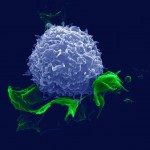Lien vers Pubmed [PMID] – 19512859
AIDS 2009 Jul;23(12):1511-8
OBJECTIVE: To identify the mechanism of nodular regenerative hyperplasia in HIV-infected patients.
DESIGN: Case-control study.
SETTING: The hepatology and the infectious disease units of two tertiary care centers in France.
PATIENTS: We compared 13 consecutive HIV-positive patients with unexplained nodular regenerative hyperplasia to 16 consecutive HIV-positive patients without nodular regenerative hyperplasia, to eight HIV-negative patients with nodular regenerative hyperplasia from an identified cause and to 10 anonymous healthy blood donors.
MAIN OUTCOME MEASURE: Patients and controls were screened for diminished protein S activity and antiprotein S immunoglobulin G (IgG) antibodies. The antiprotein S activity of purified IgG from patients and controls was assessed in a functional test of activation of protein C in which protein S serves as a cofactor. A full liver CT portography was realized on the liver explant of a case patient.
RESULTS: The CT portography disclosed diffuse obliterative portal venopathy. Levels of protein S activity were lower among patients with HIV-associated nodular regenerative hyperplasia when compared with HIV-positive patients without nodular regenerative hyperplasia and when compared with HIV-negative patients with nodular regenerative hyperplasia (P < 0.005 for all comparisons). HIV-positive patients with nodular regenerative hyperplasia had significantly higher levels of antiprotein S IgG than HIV-positive patients without nodular regenerative hyperplasia and healthy controls. Purified IgG from patients with HIV-associated nodular regenerative hyperplasia specifically inhibited the protein S-dependent protein C activation.
CONCLUSION: Acquired autoimmune protein S paucity and secondary thrombophilia appear to be causes of obliterative portal venopathy and compensatory nodular regenerative hyperplasia in HIV-positive patients.

